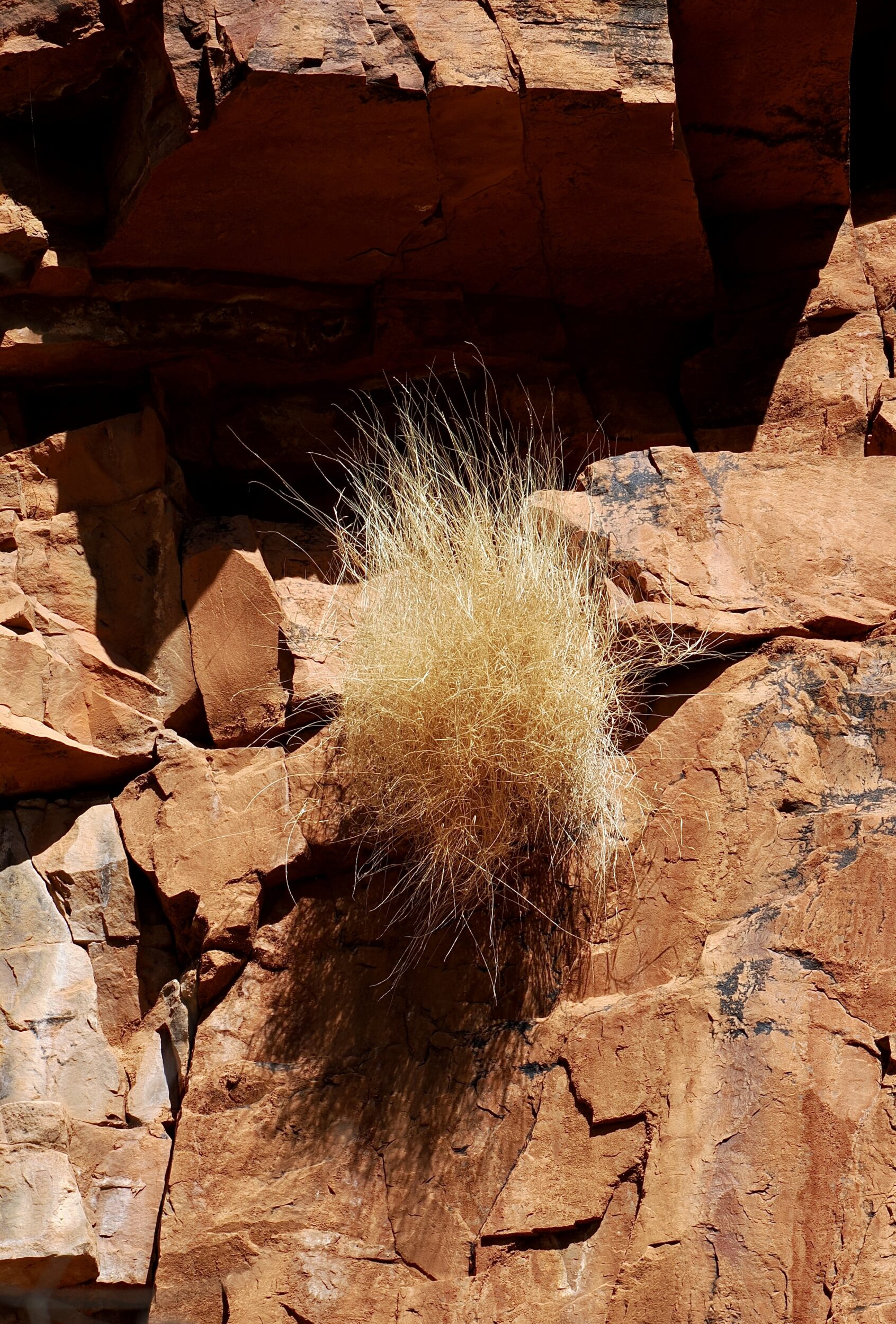You are looking (I think) at a so-called “spinifex” grass, demonstrating its hardiness in Trephina Gorge, circa 85 kilometres east of Alice Springs.
What Australians call “spinifex” is something entirely different from the “true” spinifex, which are coastal grasses that grow on at least three continents, including Australia.
The uniquely Australian “spinifex” are inland dwellers, tussocky, clump-forming grasses that grow mostly in arid or semi-arid zones,
Typically, they dominate their preferred habitats, forming “hummock grasslands”, some of which are vast.
In Australia, almost every so-called “spinifex” is a member of the large, endemic Australian genus Triodia.









